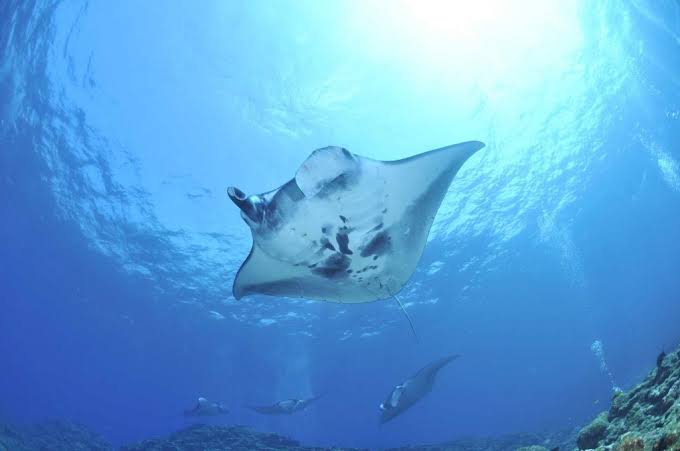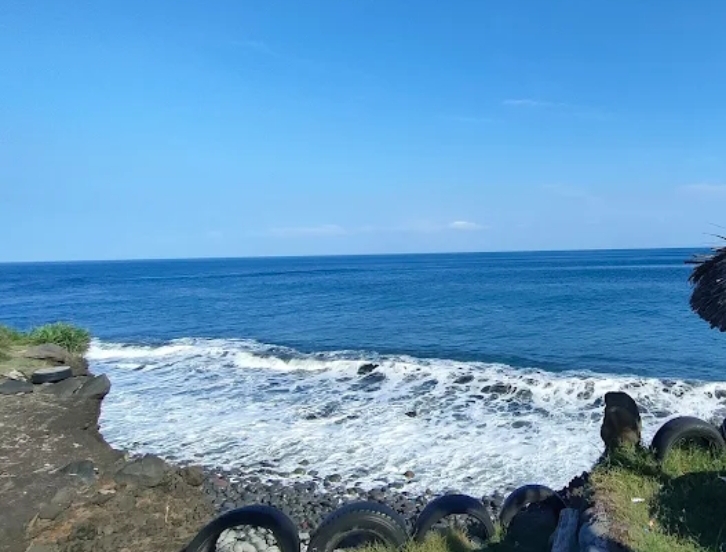Hidden off the southwestern coast of Nusa Penida lies one of Bali’s most extraordinary dive sites—Manta Point. Nestled near the cliffs of Batukandik village in Klungkung Regency, this remote spot offers more than just pristine waters and vibrant coral reefs.
Surrounded by rugged limestone formations and sweeping views of the Indian Ocean, Manta Point is a must-visit location for diving and snorkeling enthusiasts.
What makes Manta Point truly special is its reputation as a haven for manta rays. These majestic creatures, with wingspans reaching up to five meters, glide gracefully through the currents and are frequently spotted year-round. Divers and snorkelers alike are drawn here for the rare chance to swim alongside them in their natural environment.
A Natural Cleaning Station for Manta Rays
Manta Point serves as a cleaning station where manta rays gather to rid themselves of parasites, with the help of smaller reef fish that nibble away the debris from their bodies. The mantas often approach the shallow areas, giving snorkelers an incredible opportunity to witness this behavior up close—a truly memorable experience.
Perfect for All Experience Levels
Whether you’re new to diving or a seasoned expert, Manta Point welcomes all skill levels. However, due to the sometimes strong currents in the area, it’s highly recommended to dive with an experienced guide.
Depths at the site range from 3 to 30 meters, and visibility typically spans between 5 to 20 meters. The underwater terrain is diverse, featuring vibrant coral gardens, dramatic rock formations, and a rich variety of marine species.
Marine Life Beyond the Mantas
While manta rays are the stars of the show, they’re far from the only highlight. Divers often spot bamboo sharks, blue-spotted stingrays, and even elusive reef sharks. During certain seasons, the elusive Mola Mola (sunfish) and even whale sharks make an appearance.
For macro enthusiasts, the site also hides smaller marine treasures like nudibranchs, porcelain crabs, and Zanzibar shrimp. Crown jellyfish sightings have also been reported, adding to the site’s allure.
Reaching Manta Point
To get to Manta Point by sea, visitors can take a 45-minute boat ride from Toyapakeh harbor in Nusa Penida or from Sanur in mainland Bali. The journey itself is scenic—passing notable spots like Crystal Bay, Gamat Bay, Angel’s Billabong, Broken Beach, and Kelingking Beach.
On land, you can travel toward Peguyangan Waterfall and follow signs leading to a cliffside viewpoint near a white temple. From there, the sight of manta rays gliding through the blue waters below is simply breathtaking—though swimming or diving must be done by boat, as the viewpoint has no direct access to the sea.
Snorkeling Options: Manta Bay vs. Manta Point
Most snorkeling operators take tourists to Manta Bay near Broken Beach, due to its proximity and relatively higher manta sighting chances—around 80%. However, this area often gets crowded with boats, making the experience feel rushed and chaotic.
For a more relaxed and respectful encounter, many snorkeling companies now prefer the longer journey to Manta Point, where interactions with manta rays are safer, better organized, and more sustainable.
An Unforgettable Ocean Journey
From scenic boat rides and world-class marine life to peaceful encounters with giant mantas, Manta Point offers a once-in-a-lifetime experience. Whether you’re diving among colorful reefs or snorkeling above graceful rays, your time at this magical location will be nothing short of unforgettable. (BT)





